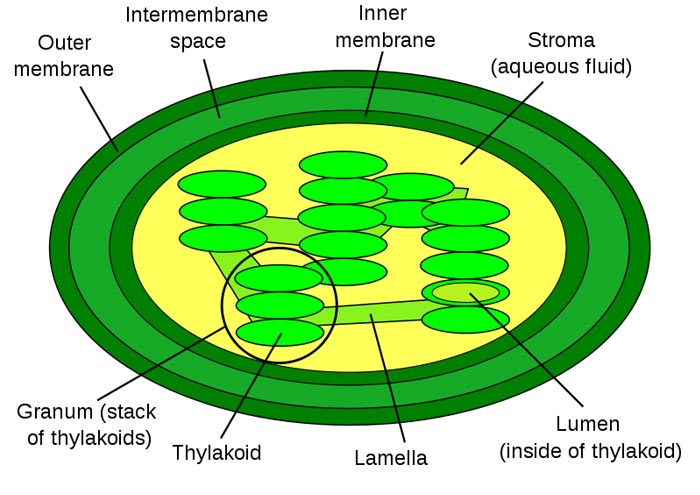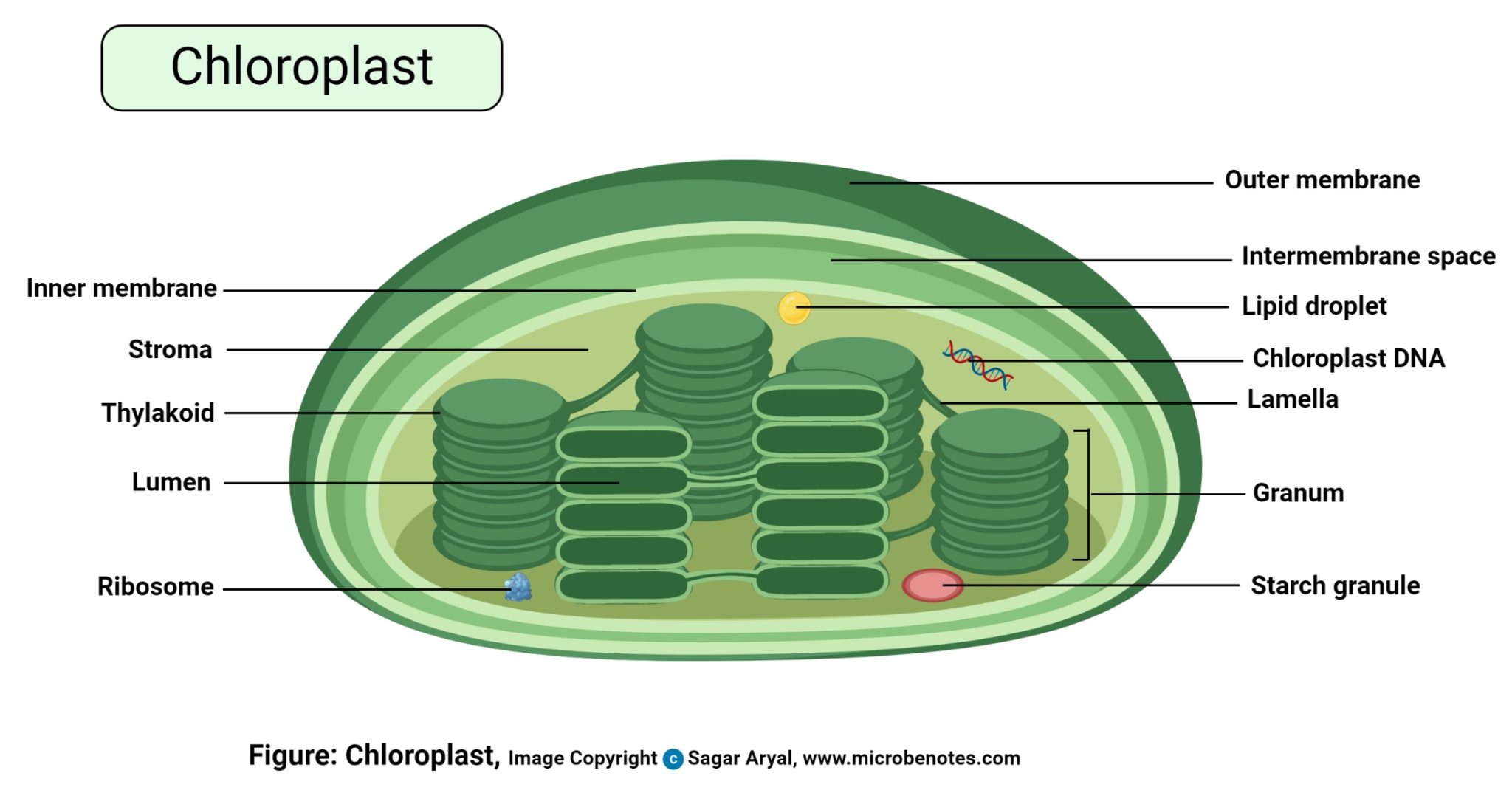Is stroma a chloroplast? While both are essential components of plant cells, the answer lies in understanding their distinct roles within the intricate machinery of photosynthesis. The stroma, a viscous fluid found within the chloroplast, serves as the bustling hub for the Calvin cycle, the crucial process where carbon dioxide is transformed into sugars. Meanwhile, the chloroplast, a green organelle, is the powerhouse of plant cells, capturing sunlight and converting it into chemical energy.
Together, they orchestrate the life-sustaining process that fuels our planet.
Delving deeper, the stroma’s composition reveals a fascinating world of enzymes, proteins, and molecules. It is a dynamic environment where the magic of photosynthesis unfolds, converting light energy into the chemical energy stored in glucose. This intricate dance of molecules within the stroma is a testament to the complexity and elegance of life’s processes.
Defining Stroma

The stroma is a vital component within a chloroplast, the organelle responsible for photosynthesis in plant cells. Imagine the chloroplast as a bustling factory, and the stroma is the factory floor where essential processes take place.
Stroma’s Structure and Location
The stroma is a semi-fluid, colorless matrix that fills the space between the inner membrane of the chloroplast and the thylakoid membranes. It’s a dynamic environment, containing a complex mixture of enzymes, proteins, and other molecules essential for photosynthesis.
Stroma’s Composition
The stroma’s composition is crucial for its diverse functions:
- Enzymes: The stroma houses a variety of enzymes, including those involved in the Calvin cycle, which fixes carbon dioxide into organic molecules.
- Proteins: Proteins play a critical role in the stroma, contributing to various functions, such as structural support, enzyme regulation, and transport of molecules.
- DNA and Ribosomes: The stroma contains chloroplast DNA (cpDNA), which carries genetic information for the synthesis of chloroplast proteins. It also houses ribosomes, the protein synthesis machinery within the chloroplast.
- Inorganic Ions: Stroma contains inorganic ions like magnesium (Mg 2+), which is essential for chlorophyll synthesis and other enzymatic reactions.
- Sugars and Starch: As photosynthesis progresses, sugars are produced and stored as starch granules within the stroma.
Stroma’s Role in Photosynthesis
The stroma is the site of the Calvin cycle, a crucial part of photosynthesis where carbon dioxide is converted into glucose.
The Calvin cycle is a series of biochemical reactions that use energy from ATP and NADPH produced during the light-dependent reactions to fix carbon dioxide into organic molecules, ultimately producing glucose.
The stroma also plays a vital role in energy production:
- ATP Production: The stroma contains enzymes that utilize ATP, the energy currency of the cell, for various metabolic processes, including the Calvin cycle.
- NADPH Production: The stroma utilizes NADPH, a reducing agent, for the Calvin cycle, providing electrons needed for carbon fixation.
Understanding Chloroplasts

Chloroplasts are the powerhouses of plant cells, playing a crucial role in photosynthesis, the process that converts light energy into chemical energy in the form of sugars. These organelles are found in all plant cells and some algae, and they are essential for the survival of these organisms.
Internal Structure of Chloroplasts
Chloroplasts have a complex internal structure that facilitates the intricate processes of photosynthesis. The chloroplast is enclosed by a double membrane, known as the chloroplast envelope. Inside the envelope lies the stroma, a gel-like matrix that contains enzymes, ribosomes, and DNA. Embedded within the stroma is a network of interconnected membranous sacs called thylakoids. These thylakoids are stacked into grana, which are connected by intergranal lamellae.
Differences Between Stroma and Thylakoid Lumen
The stroma and the thylakoid lumen are two distinct compartments within the chloroplast, each with unique characteristics and functions.
- Stroma: The stroma is the fluid-filled region surrounding the thylakoid membranes. It contains enzymes necessary for the Calvin cycle, the light-independent reactions of photosynthesis, which convert carbon dioxide into sugars. The stroma also houses chloroplast DNA, ribosomes, and other essential molecules.
- Thylakoid Lumen: The thylakoid lumen is the space enclosed by the thylakoid membrane. It is the site of the light-dependent reactions of photosynthesis, where light energy is captured and used to generate ATP and NADPH. The lumen also plays a role in regulating the pH of the chloroplast.
The Significance of Stroma

The stroma, the semi-fluid matrix within a chloroplast, plays a vital role in maintaining the chloroplast’s functionality and supporting the complex processes of photosynthesis. Its unique composition and intricate structure contribute significantly to the overall efficiency of energy conversion within the plant cell.
The Stroma’s Role in Photosynthesis
The stroma is a dynamic environment that houses numerous enzymes and molecules crucial for the light-independent reactions of photosynthesis, also known as the Calvin cycle. This cycle utilizes the energy captured during the light-dependent reactions to convert carbon dioxide into glucose, the primary energy source for the plant.
- Enzymes: The stroma contains a diverse array of enzymes that catalyze the various steps of the Calvin cycle, including carbon fixation, reduction, and regeneration of the starting molecule, RuBP. These enzymes work in a coordinated manner to ensure the efficient conversion of carbon dioxide into glucose.
- Rubisco: One of the most abundant enzymes in the stroma, Rubisco, plays a central role in carbon fixation. This enzyme binds to carbon dioxide and incorporates it into an organic molecule, initiating the Calvin cycle.
- ATP and NADPH: The stroma receives ATP and NADPH, energy-rich molecules produced during the light-dependent reactions, from the thylakoid membranes. These molecules power the enzymatic reactions of the Calvin cycle, providing the necessary energy for glucose synthesis.
Impact of Stroma Disruptions, Is stroma a chloroplast
Any disruption or alteration to the stroma’s structure or composition can significantly impact the efficiency of photosynthesis. This can result in reduced glucose production, affecting the plant’s growth, development, and overall survival.
- Enzyme Inhibition: Environmental stressors, such as high temperatures or heavy metal contamination, can inhibit the activity of enzymes within the stroma, leading to a slowdown in the Calvin cycle and reduced glucose production.
- Rubisco Inhibition: High levels of oxygen can compete with carbon dioxide for binding to Rubisco, reducing its efficiency in carbon fixation. This process, known as photorespiration, can significantly decrease photosynthetic output.
- Stroma pH Changes: Changes in the pH of the stroma can affect the activity of enzymes and the efficiency of the Calvin cycle.
As we unravel the intricacies of the stroma and its role in photosynthesis, we gain a deeper appreciation for the elegant design of nature. The stroma, with its bustling activity and intricate interactions, serves as a microcosm of the remarkable efficiency and beauty found in the natural world. From the delicate balance of enzymes to the intricate interplay of reactions, the stroma stands as a testament to the power and wonder of life itself.
FAQ Corner: Is Stroma A Chloroplast
What is the difference between the stroma and the thylakoid lumen?
The stroma is the fluid-filled space within the chloroplast, while the thylakoid lumen is the space enclosed by the thylakoid membrane. The thylakoid lumen is where the light-dependent reactions of photosynthesis take place, while the stroma is where the Calvin cycle occurs.
What are the key enzymes involved in the Calvin cycle?
Key enzymes in the Calvin cycle include Rubisco, which catalyzes the fixation of carbon dioxide, and phosphoribulokinase, which generates the five-carbon sugar ribulose bisphosphate.
How does the stroma contribute to the overall efficiency of photosynthesis?
The stroma provides a compartmentalized environment for the Calvin cycle, allowing for the efficient production of glucose. It also houses the enzymes and other molecules necessary for the process, ensuring a smooth flow of reactions.






